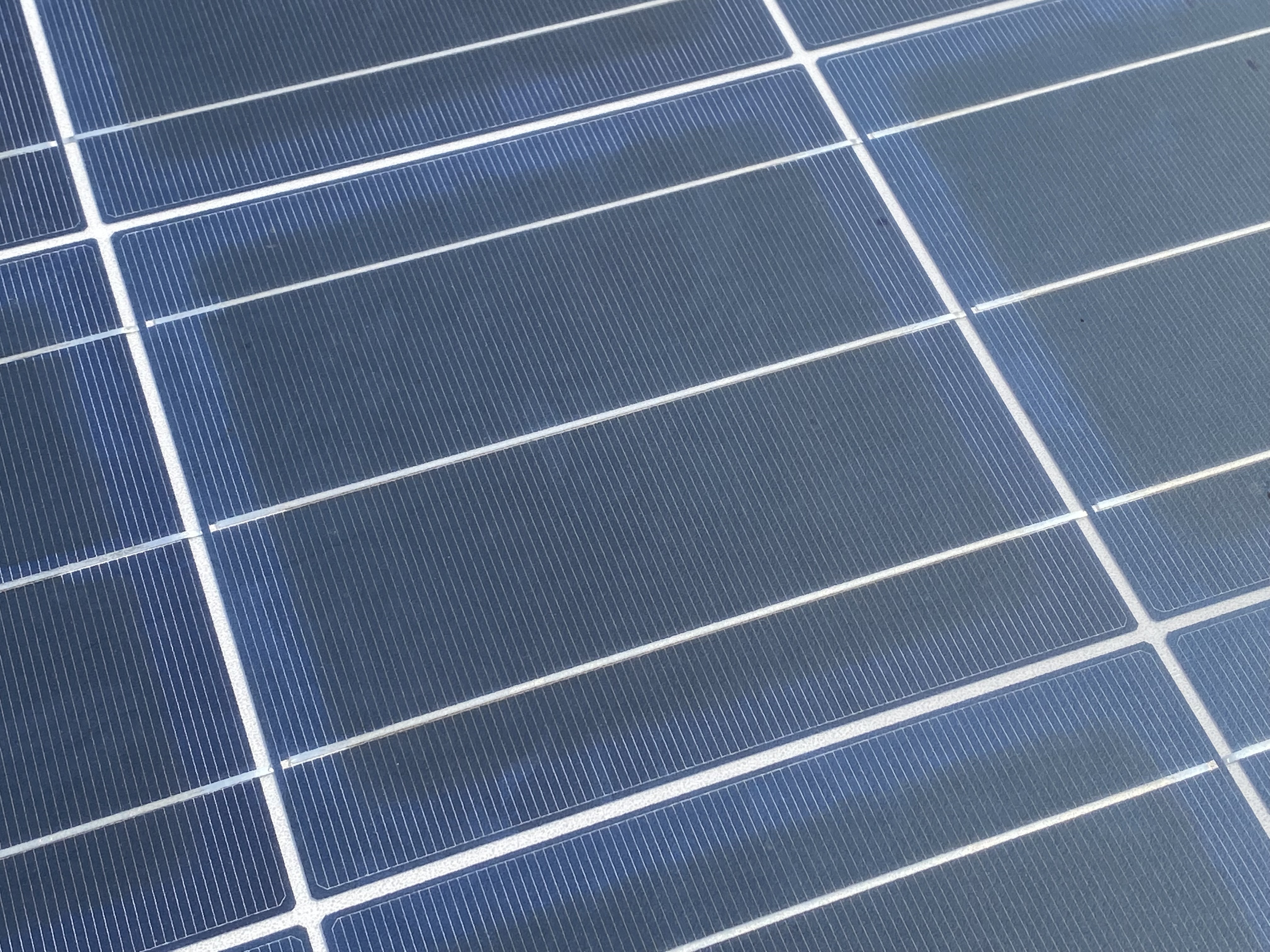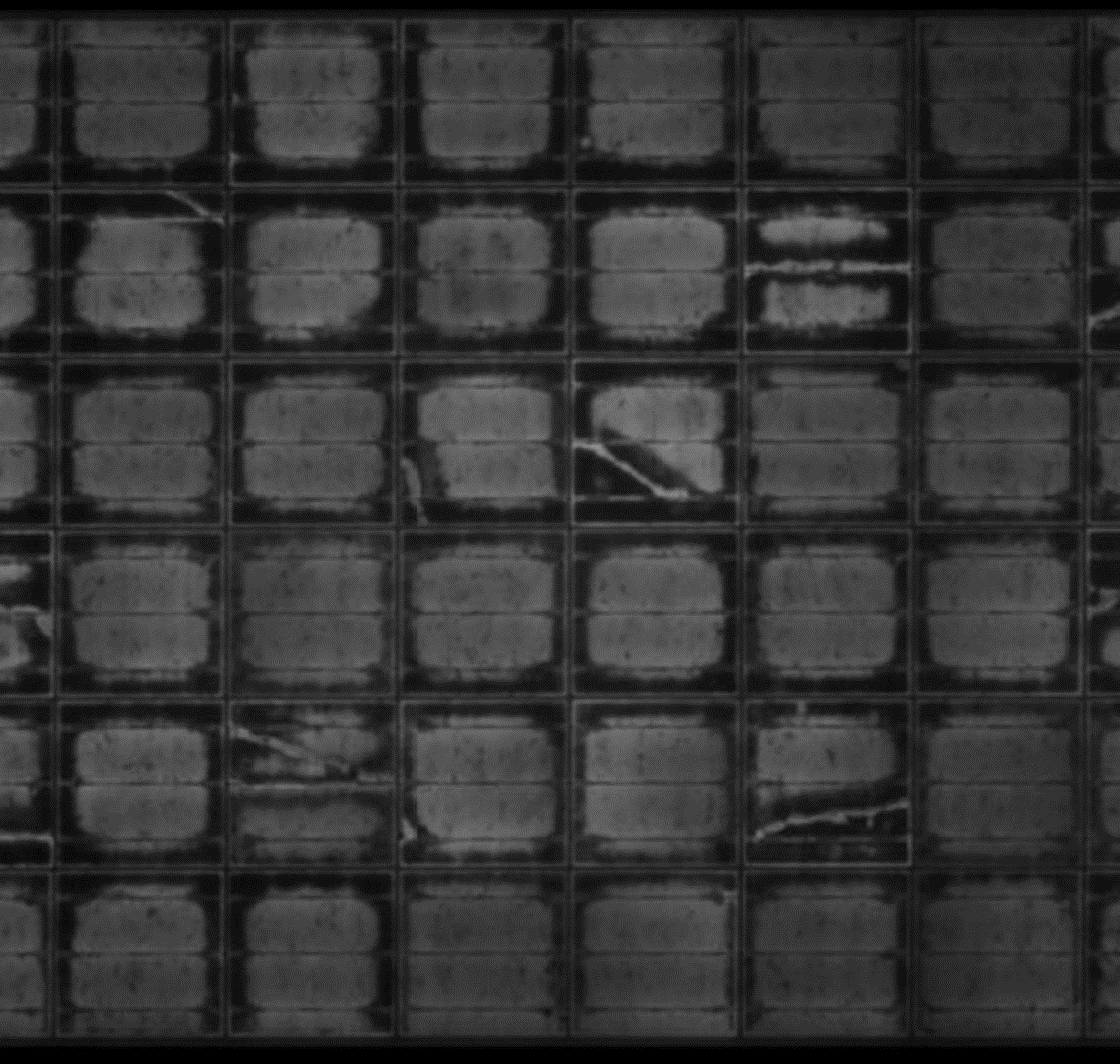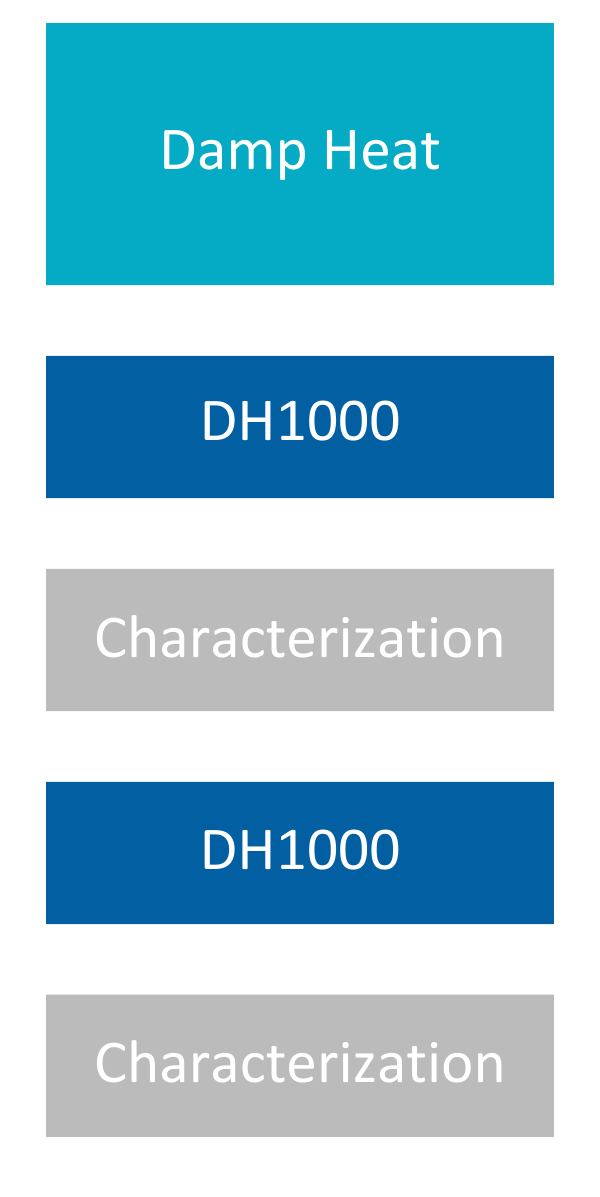Why damp heat testing matters
The site owner of a Taiwanese 1.1 MW rooftop site, commissioned in 2016, started noticing underperformance after five years of operation when comparing it to their other sites. Kiwa Extel was appointed to inspect the site. Their visual inspection discovered that the modules had significant corrosion of the metallization around the cells’ perimeter, along with ‘snail trails’ at microcrack locations. It was clear that moisture entered through the backsheet and encapsulant, causing corrosion on the cell surface. 100% of the modules were affected.
According to research conducted by Dr. Todd Karin, Kiwa PVEL’s VP of Technical Operations, on Photovoltaic Climate Zones, Taiwan has an H7 Specific Humidity rating*. This type of cell corrosion is expected to occur faster and be more prevalent in these high humidity areas.
Cell corrosion similar to this has been observed in Kiwa PVEL’s Damp Heat test results, but may not be evident after the shorter, 1000 hour IEC 61215 test. As more solar capacity gets deployed in the high heat and high humidity regions between the tropics, the PQP’s extended Damp Heat test becomes imperative to avoid field failures.
*Karin, T., Birk Jones, C., Jain, A. Photovoltaic Climate Zones: The Global Distribution of Climate Stressors Affecting Photovoltaic Degradation. EUPVSEC (2019).
 |
 |
| The lighter color around the cells’ perimeter is visual evidence of corrosion. | The lighter color around the cells’ perimeter is visual evidence of corrosion.The site owner arranged for a sample of modules to be sent for EL imaging, where signs of corrosion around the cells’ perimeter were even more obvious. |

Specific Humidity zones across the globe according to the Photovoltaic Climate Zone classification system.
Materials assessed
These materials all play a role in protecting the PV module from environmental elements and ensuring that all components are firmly bonded together and resistant to corrosion:
|
 |
Test procedure
| DH subjects modules to a constant 85°C and 85% relative humidity in an environmental chamber for two periods of 1000 hours each. This test is twice the duration required for IEC certification in order to identify additional module failure modes where the combination of high heat and intense moisture stresses the PV module layers. Characterizations are conducted every 1000 hours. |  |

